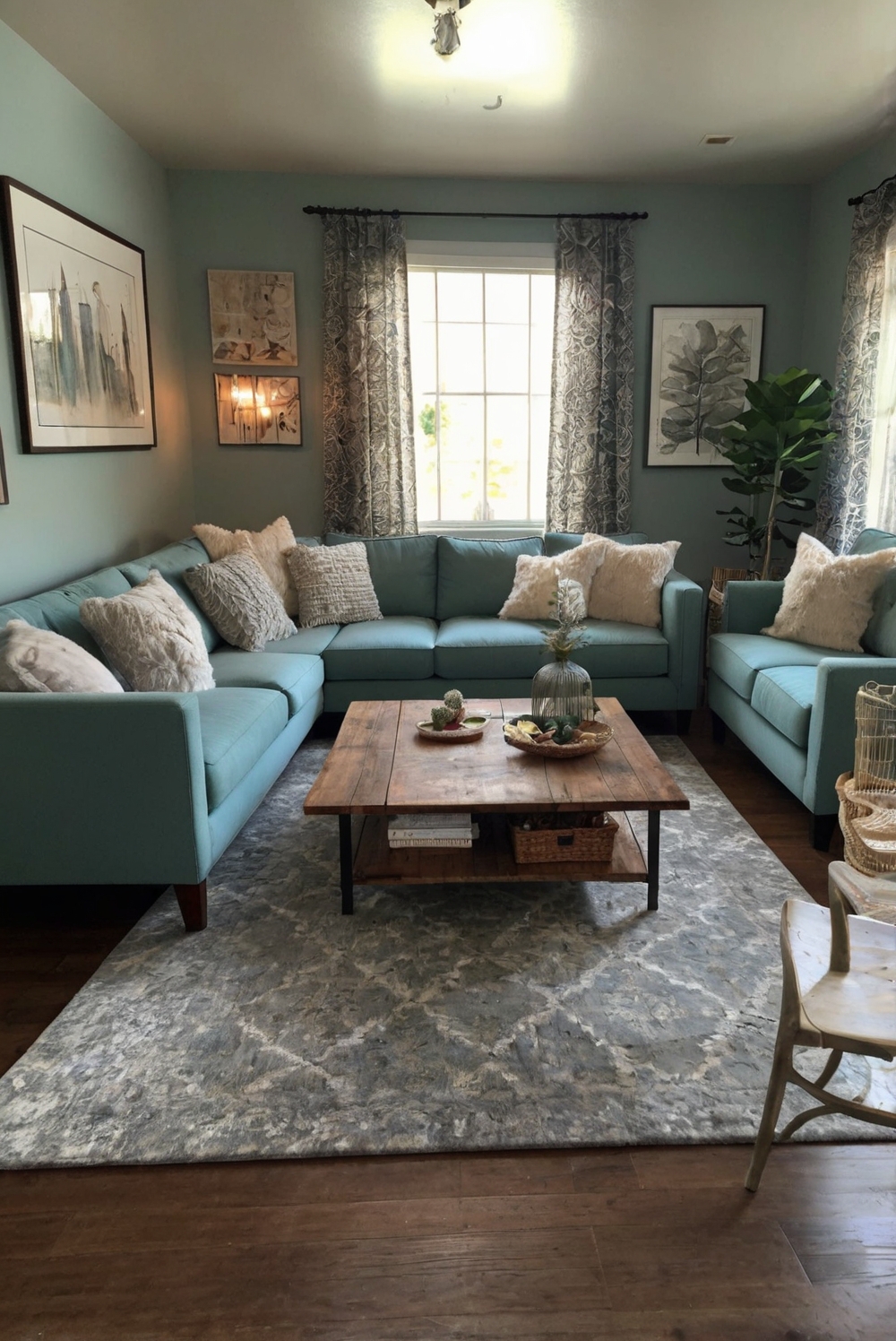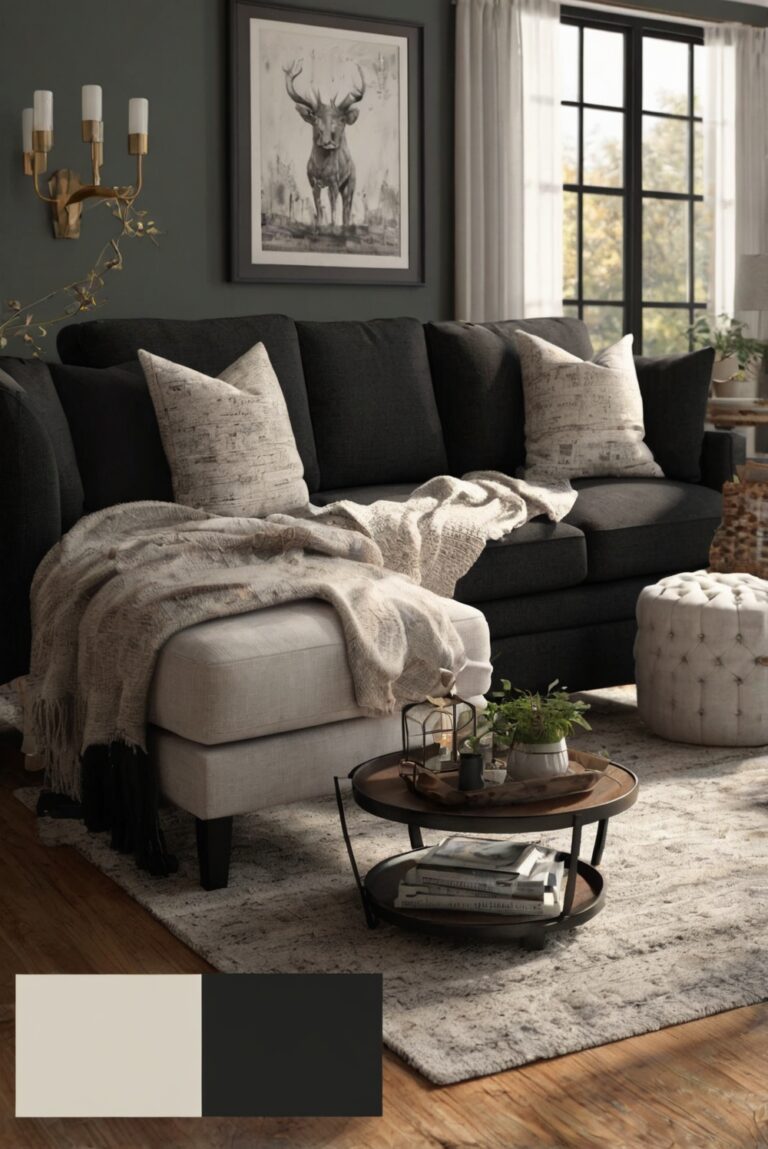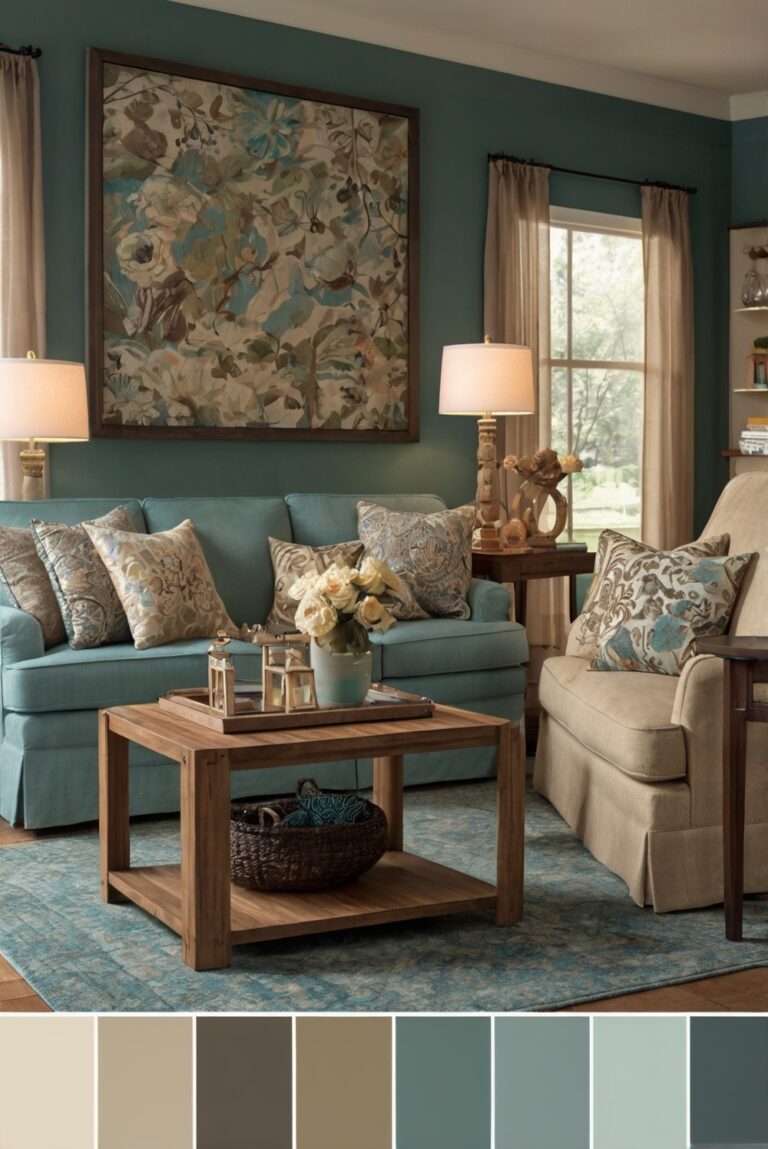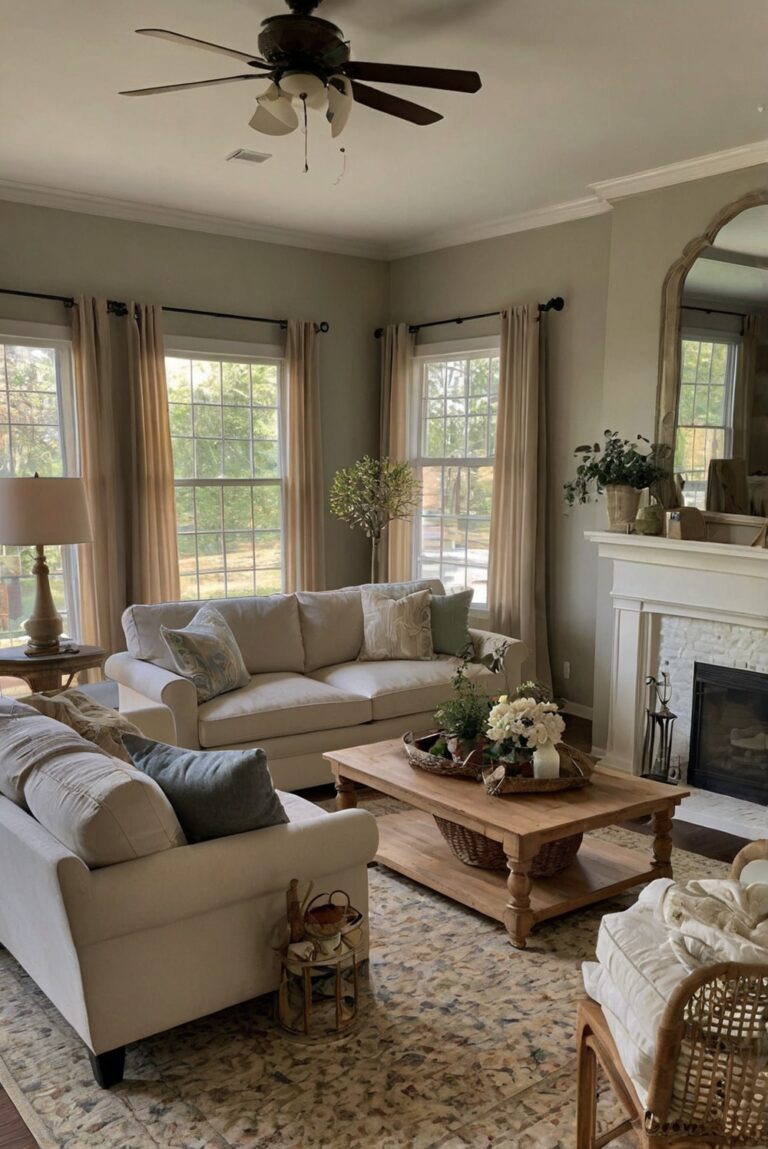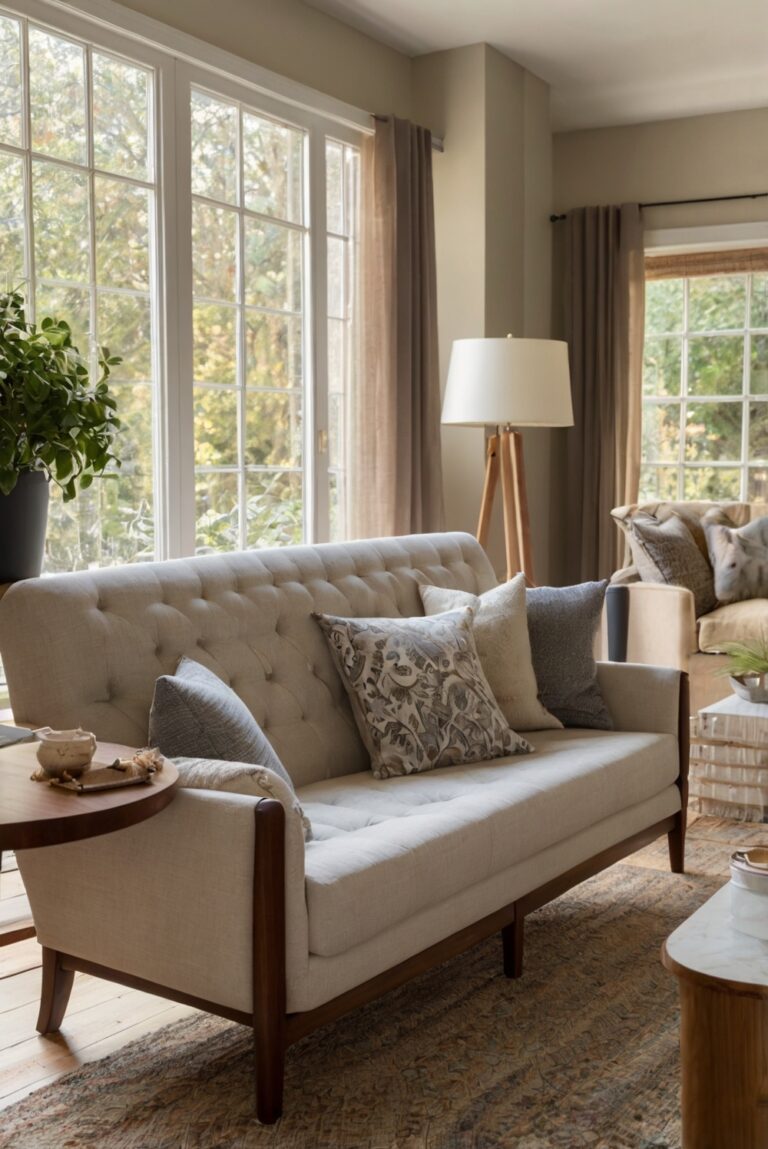Enhance your daily routine as an interior designer by learning how to expertly mix and match different furniture styles in your living room. A must-read for design enthusiasts!
To mix and match different styles of furniture in your living room, start by selecting a color scheme that ties everything together. Choose one dominant style as your base and then incorporate pieces from different styles to add variety and interest. Use complementary patterns and textures to create cohesion, and don’t be afraid to mix modern and traditional elements. Consider the layout of the room and ensure there is enough space for each piece of furniture. Incorporating elements such as rugs, throw pillows, and artwork can help tie everything together. Pay attention to details like wall paint colors and lighting to create a harmonious overall look. Proper space planning is key to a successful mix of styles in your home decor interior design.
How do you mix and match different styles of furniture in your living room?
Start by identifying the key styles:
When mixing different styles of furniture in your living room, it is important to first identify the key styles you want to incorporate. Determine the main style or theme you want to achieve in your space. Whether it’s modern, traditional, eclectic, or transitional, having a clear vision will help guide your furniture selection process.
Choose a cohesive color palette:
To create a harmonious look when mixing different furniture styles, opt for a cohesive color palette. Select colors that complement each other and tie the different pieces together. You can choose a neutral base color and add pops of color through accent pieces like throw pillows, rugs, or artwork.
Balance is key:
When mixing different furniture styles, balance is crucial. Aim for a mix of different pieces that vary in scale, shape, and texture. For example, if you have a large, plush sofa, balance it out with smaller, sleek accent chairs. Mixing different textures like wood, metal, and fabric can also add visual interest to your space.
Consider the scale and proportion:
When mixing different furniture styles, consider the scale and proportion of each piece. Avoid overcrowding your space with too many large furniture pieces or overwhelming it with small items. Create a sense of balance by mixing larger anchor pieces with smaller accent pieces.
Layer in accessories:
To tie everything together when mixing different furniture styles, don’t forget to layer in accessories. Decorative items like throw pillows, rugs, curtains, and artwork can help bridge the gap between different styles and create a cohesive look. Choose accessories that reflect your personal style and add personality to your living room.
In conclusion, mixing and matching different styles of furniture in your living room can create a unique and personalized space. By following these tips and guidelines, you can achieve a harmonious look that reflects your individual style and personality. Remember to focus on key styles, choose a cohesive color palette, balance different pieces, consider scale and proportion, and layer in accessories to complete the look. With careful planning and attention to detail, you can successfully mix and match different furniture styles to create a stunning and inviting living room.
1. What are some key tips for mixing and matching different styles of furniture in a living room?
To successfully mix and match different styles of furniture in your living room, consider combining pieces that share a common color palette or material. This creates a cohesive look while allowing for variety in styles. Additionally, incorporating pieces with similar proportions can help maintain balance in the space. Don’t be afraid to experiment with contrasting styles, such as pairing modern with traditional or rustic with contemporary, to create a dynamic and visually interesting room. Remember to pay attention to scale and ensure that the furniture pieces complement each other in terms of size and function.
2. How can I create a harmonious look when mixing different furniture styles in my living room?
To achieve a harmonious look when mixing different furniture styles in your living room, start by selecting a dominant style or theme as a foundation. From there, introduce pieces from other styles that complement the dominant style while adding visual interest. Incorporating elements like rugs, throw pillows, and artwork can help tie together disparate furniture pieces and create a cohesive look. Consider using a neutral color scheme as a unifying factor to bring together varied furniture styles. Experiment with layering textures and patterns to add depth and dimension to the room while maintaining a sense of harmony.
3. What are some common mistakes to avoid when mixing and matching different furniture styles in a living room?
When mixing and matching different furniture styles in a living room, it’s important to avoid some common mistakes to ensure a cohesive and visually appealing space. One common mistake is overcrowding the room with too many furniture pieces from different styles, which can create a cluttered and chaotic look. Another mistake is neglecting the importance of scale and proportion when combining different furniture pieces, leading to an unbalanced and awkward arrangement. Additionally, failing to consider the overall flow and function of the room can result in a disjointed and impractical design. To avoid these pitfalls, carefully plan and edit your furniture selections to create a well-curated mix of styles that work harmoniously together.
4. How can I mix and match furniture styles in my living room to create a unique and personalized space?
To mix and match furniture styles in your living room and create a unique and personalized space, start by identifying your personal design preferences and incorporating pieces that reflect your individual style. Consider blending vintage or heirloom furniture with contemporary pieces to add character and personality to the room. Mix different textures, materials, and finishes to introduce depth and richness to the space. Experiment with eclectic combinations of furniture styles to create a one-of-a-kind look that showcases your creativity and flair. Don’t be afraid to think outside the box and embrace unexpected pairings to infuse your living room with a sense of originality and charm.
5. Are there any specific guidelines or rules to follow when mixing and matching furniture styles in a living room?
While there are no strict rules when it comes to mixing and matching furniture styles in a living room, there are some guidelines that can help you achieve a cohesive and well-balanced design. Start by selecting a common element, such as color, texture, or shape, to tie together diverse furniture pieces and create a unified look. Pay attention to the scale and proportion of each furniture item to ensure they complement each other harmoniously. Experiment with layering different styles and incorporating unexpected elements to add visual interest and personality to the room. Ultimately, trust your instincts and have fun exploring different combinations to create a living room that reflects your unique taste and style.

